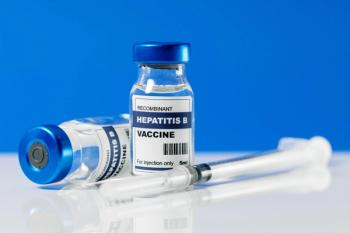
- Vol 42, Issue 5
How to Protect Your Professional Boundaries Digitally
Key Takeaways
- Healthcare professionals must maintain ethical standards in media, similar to clinical practice, ensuring informed consent and clear boundaries.
- Professional boundaries in media include using disclaimers, maintaining confidentiality, and separating personal and professional spheres.
Mental health professionals should navigate media engagement by upholding ethical standards, ensuring informed consent, and combating misinformation to promote public awareness.
In clinical practice, we take an oath to do no harm. The same principle should apply to our engagement with media. Whether through social platforms, podcasts, or traditional outlets, our goal remains the same: to inform, educate, and support without compromising ethical and professional integrity.
Informed Consent in Media
Just as we prioritize informed consent when discussing medications with patients—addressing risks, benefits, and alternatives—we must approach media with similar diligence. Digital communication is a powerful tool, but without clear boundaries, it can blur the line between education and clinical care, leading to ethical and professional challenges.
Risks and Resources
The good news is that we do not have to navigate this space alone. If you are affiliated with an academic institution or hospital, look to the communications or public relations department to provide guidance. Additionally, consult a legal adviser or malpractice attorney who can help clarify best practices regarding social media and media engagements.
However, some of the most valuable insights come from experienced mentors who have successfully managed this balance. I had the opportunity to speak with Derek H. Suite, MD, a notable sports psychiatrist and host of the daily Suite Spot podcast with over a decade of experience navigating the New York media landscape. His work with high-profile athletes and multiple sports and entertainment franchises underscores the importance of maintaining professional boundaries.
“Navigating the digital space is especially challenging for mental health professionals,” Suite explained. “There are countless land mines around personal and professional boundaries. My approach starts with recognizing how easy it is to inadvertently cross or violate them. I have avoided boundary violations because I took the time to understand the operating parameters, potential pitfalls, and hidden risks before engaging with media—whether social or traditional.”
Establishing Professional Boundaries
Suite adheres to the following set of guiding principles to ensure professional integrity in media engagement:
- Use disclaimers. Clearly state that all content (posts, videos, podcasts) is for educational purposes only.
- Define professional identity. Explicitly state, “I am a board-certified psychiatrist providing general educational information.”
- Avoid clinical substitutions. Emphasize that media engagement is not a substitute for treatment.
- Stay within ethical guidelines. Maintain strict confidentiality and never share identifiable patient information.
- Use general themes. Discuss topics like resilience, motivation, and mental wellness rather than case-specific details.
- Rely on evidence-based content. Share research-backed information rather than direct clinical experiences.
- Separate personal and professional spheres. Keep personal social media private and distinct from professional accounts.
- Avoid dual relationships. Do not engage in personal relationships with social media followers who are not already personal contacts.
- Maintain professionalism. All interactions should align with clinical ethics and professional standards.
- Steer clear of controversial topics. Avoid oversharing personal opinions or engaging in polarizing discussions.
- Draw a clear distinction between public education and private practice. Ensure the audience understands that online engagement does not constitute a therapeutic relationship.
“The bottom line,” Suite emphasized, “is to create a space that fosters accessibility while preserving professional integrity. The goal is to build trust, not provide treatment.”
Media as a Public Education Tool
To gain additional insight, I spoke with Howard Liu, MD, MBA, chair of the American Psychiatric Association’s (APA) Council on Communications. He highlighted the importance of psychiatrists participating in media to counter misinformation and increase public access to reliable mental health information.
“As chair of the APA’s Council on Communications, I am so appreciative of our members who take the time to work with the media. Very few members of the public have a chance to read our scientific journals, so the media plays a key role in reaching our stakeholders across generations, in different languages, etc. Our psychiatrists are needed to counter misinformation and to share accurate information on diagnosis and treatment.”
Liu shared some key best practices as well:
Dos
- Be very clear about whom you represent. Only share your APA title if you are specifically asked by Erin Connors, Alexa Haverlah, or the APA media team to do an interview. I typically add that these are my personal views and not representative of the APA.
- Help the APA media team when they reach out. Know that many journalists are on a very short deadline (hours to days). If you can lend a helpful insight, try to create time to talk to the journalist. If you cannot, offer to do so by email.
- Offer to double-check the article if they have time to ensure your quote is accurately represented. (Note: There is not always time in the production deadline for the journalist to share this with you.)
- Ask the APA media team for assistance if you are unfamiliar with a journalist, publication, or show. Erin Connors and Alexa Haverlah can provide insight.
- Practice. Erin Connors and Alexa Haverlah are great about sharing resources and helping you develop your talking points for a media interview.
Don’ts
- Speculate. If you do not know an answer, do not make a guess. Just ask if you can get back to them on that or say you do not know the answer to that question.
- Violate the Goldwater Rule. Do not speculate about the mental health of public figures.
- Say things offhand that you would not want your patients, peers, and other health care professionals to read if taken out of context. Always consider yourself “on the record” when speaking to a journalist.
Combating Misinformation
A critical lesson in media engagement is preparation. Delivering accurate health information in a short TV segment often requires as much preparation as a full-length lecture. To be effective:
- Stay current. Ensure that all shared information is evidence-based and up to date.
- Anticipate questions. Consider potential follow-up questions and prepare responses.
- Communicate clearly. Use simple, accessible language to ensure public understanding.
Responsible Media Engagement
Psychiatrists play a crucial role in shaping public discourse on mental health. By following ethical guidelines, maintaining professional boundaries, and ensuring accuracy in media engagements, we can use digital platforms as a force for good—promoting mental health awareness while safeguarding professional integrity. By approaching media engagement with the same diligence as clinical practice, we can inform, educate, and inspire—without compromising ethical principles.
Dr Mirhom is the immediate past president of the New York County Psychiatric Society, an assistant professor of psychiatry and codirector of the PPF Express Program at Columbia University, and the chief wellbeing officer at Athletes for Hope.
Articles in this issue
7 months ago
"Transference"7 months ago
The Double-Edged Sword of Affluence7 months ago
The Therapeutic AllianceNewsletter
Receive trusted psychiatric news, expert analysis, and clinical insights — subscribe today to support your practice and your patients.













